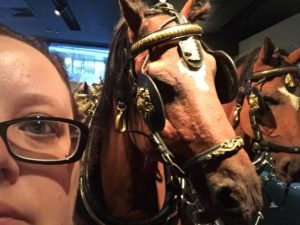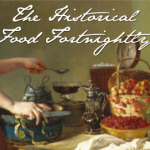If you’ve followed me for any length of time, you will know I am a huge fan of research. Honestly, I think it’s one of the reasons I chose to focus on historical romance. I love to learn, and being an author of historical fiction has given me so many opportunities to pick up interesting tidbits — such as the phenomenon of the exploding eyes. The only drawback is that much of what I need to know occurred so far in the past that there are no living people to interview. All we have left to us are written accounts from journals and newspapers, as well as the popular literature and artwork of the time.

What is a historical writer to do? Go in search of adventure, of course! Over the past few years, I’ve made it a habit of searching out whatever I can in order to shed some light on Georgian and Regency life. It’s even been the origin of my favorite hashtag: #ItsResearchISwear
And let me tell you, I’ve had quite a fun time doing so!
So I’ve rounded them up. While this is a Top Ten list, it was much too long to fit into one blog post, so I split it up. Here is Part 1 of my Top Ten Adventures in Research. :)
10. Cooking
 I know this doesn’t sound like research, but bear with me. Historical Food Fortnightly challenges its participants to find a way to combine history and food. In finding recipes to fit the challenges, I have been forced to look up obscure events, deeply research cooking techniques and — my current bane — find food mentioned in song for the time period I chose. Do you know how hard it is to find something other than a reference to alcohol in songs from the early 1800s? I’m still looking and the challenge is due this week! I think my favorite challenge, though, was from last year and learning all about the Prince Regent’s Fête from 1811.
I know this doesn’t sound like research, but bear with me. Historical Food Fortnightly challenges its participants to find a way to combine history and food. In finding recipes to fit the challenges, I have been forced to look up obscure events, deeply research cooking techniques and — my current bane — find food mentioned in song for the time period I chose. Do you know how hard it is to find something other than a reference to alcohol in songs from the early 1800s? I’m still looking and the challenge is due this week! I think my favorite challenge, though, was from last year and learning all about the Prince Regent’s Fête from 1811.
9. Dancing
In the Regency, dancing was more than just a fun activity. Social customs were strict, and men and women were limited in what interactions they could have. They were not allowed to be seen alone together (much less be alone together), touch each other without gloves, or even speak to each other without a proper introduction. One way men and women could socialize was at assemblies and balls. The dancing then became a way for men and women to assess each other, and offer them an opportunity to talk amongst themselves to see if they’d suit.
A couple of years ago, some other historical authors in my local RWA chapter heard about a community center that offered English country dance lessons. So of course we had to give it a try. After all, I couldn’t send my characters dancing at a ball without knowing what they were doing, could I? Sadly, this video is not of us, but just a representation of the type of dancing we learned, as well as what a typical assembly would be like.
8. Falconry
During the Regency, landowners were the top of society (other than the royals). Peers and landed gentry owned vast tracts of land, sometimes multiple estates depending on the title. Hunting, coursing, riding to hounds were all popular sports that the upper classes participated in, One sport that had seen a decline in the 18th century was falconry. By the early 1800s it was starting to make a comeback.
So when I saw an advert for a brief lesson in falconry, I jumped at the chance for a little hands-on research. While most falconry in modern times is for industrial purposes (keeping nuisance birds out of fancy HOAs and landfills), it was a once in a lifetime chance for me to see these magnificent birds in action. And this experience has led to yet another rabbit hole of research for a tertiary character who becomes an unconventional heroine in her own right.
Here you can see the handler using a lure on a stick. It’s like a game of keep-away!
Thanks for joining me Part 1 of my adventures. Next week we’ll go abroad and see what foreign shores have to offer in Part 2. See you next week!






6 comments